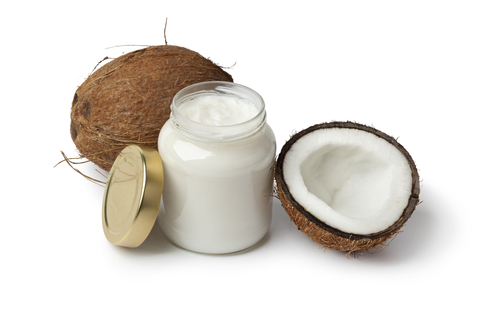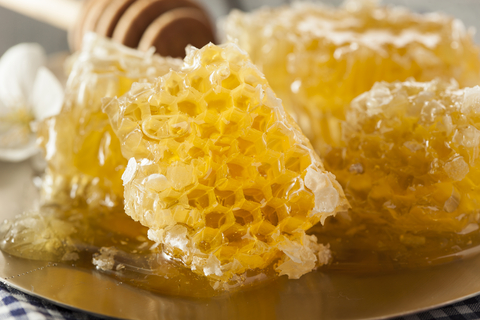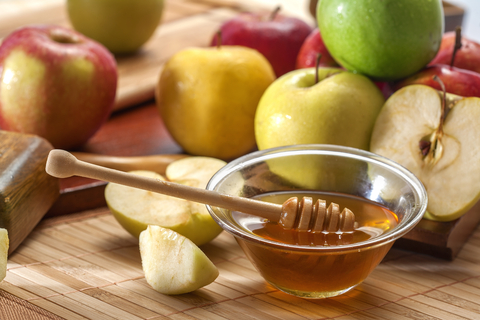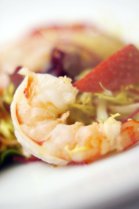
The popularity of high protein foods has been historically inconsistent; however, today many medical professionals have jumped on the “protein bandwagon!”
Protein is found everywhere in our makeup, including our hair, skin, bone, muscle, tissue, and cells. We need it to grow and develop. We need it so our immune systems can fight off infection and illness. We need it to keep our cardiac and respiratory systems strong. In parts of the world where protein is not plentiful in the diet, there is actually a condition called “kwashiorkor”, which basically describes a form of protein malnutrition.
Animal proteins are considered complete while vegetable proteins are labeled incomplete. The percentage of “completeness” depends on the number of essential amino acids found in the protein.
Logically, complete proteins come from animal products, while incomplete proteins generally come from fruit, grains, nuts, and vegetables.
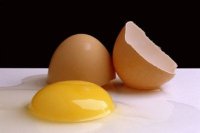 One important thing to note about high protein foods is that they are not all created equally! It’s imperative, particularly if weight loss is your ultimate goal, to pay attention to what else is in your protein of choice.
One important thing to note about high protein foods is that they are not all created equally! It’s imperative, particularly if weight loss is your ultimate goal, to pay attention to what else is in your protein of choice.
Some foods that are high in protein are also very high in fat. Fat is fine in moderation, but some fats are healthier than others. A 6-ounce steak, for example, could have 44 grams of fat, while a 6-ounce serving of salmon has about 18 grams of fat. Other high protein choices, such as lentils, have very little fat. The important thing is to be aware and read your nutrition fact labels.
So how much protein do we need? The daily Recommended Dietary Allowance (RDA) is 56 grams of protein for men and 46 grams of protein for women. These recommendations change, however, if weight loss is your goal.
Eating high protein foods for weight loss:
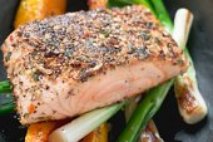 Moderately high protein diets have been linked to improved weight loss! The University of Illinois recently published research indicating that eating 73 grams of protein per pound of body weight helps preserve muscle mass, which is often lost on calorie-restricted diets.
Moderately high protein diets have been linked to improved weight loss! The University of Illinois recently published research indicating that eating 73 grams of protein per pound of body weight helps preserve muscle mass, which is often lost on calorie-restricted diets.
Another study at the University of Tennessee found that eating 3 servings a day of low-fat dairy products (which are high in protein) enhances weight loss!
Experts advise eating approximately 120 grams of protein a day for maximum weight loss benefit.
Why do high protein foods help us lose weight? Many experts believe that it is because protein helps keep us feeling full and satisfied, and therefore fewer cravings mean less snacking.
Diets high in protein and low in simple carbohydrates (mainly sugar, white bread, starches) have been found to be particularly effective for rapid weight reduction, especially when paired with exercise.
There are very few risks involved with high protein diets, but it is always a good idea to check with your doctor before switching to a diet rich in protein.
There are several weight loss programs high in protein that I can recommend from personal experience. One of the most successful high-protein diets, and my current favorite, is The Dukan Diet. This French diet is comprised of 4 specific phases designed to take you from rapid weight loss to life-long maintenance. This diet is very easy to follow, especially if you enjoy eating in restaurants.
Another favorite is The Pilot’s Diet. This 28-day plan is a particularly great way to jump–start diets. To begin 2012, I followed this plan for the month of January and then switched to The Dukan Diet. I lost 50 pounds in 4 months!
I also experienced success a few years ago with Dr. Siegal’s Cookie Diet. This plan was very easy to follow when working. I didn’t have to stop to eat breakfast or pack a lunch; I just ate cookies for both meals and had once sensible meal at night.
Finally, a diet getting a lot of buzz these days is the Paleo diet.
Excellent protein sources:
- Fish & seafood
- Poultry (turkey and chicken)
- Red meat (lean cuts of beef, pork, lamb)
- Soybeans (tofu, edamame, soy milk, tempeh)
- Beans (lentils, kidney, black, garbanzo)
- Nuts(walnuts, almonds, cashews, pistachios)
- Dairy (low-fat milk, cheese, yogurt-especially Greek)
- Eggs
- Peanut butter & almond butter
- Some whole grains (quinoa, oatmeal, whole-grain breads/pasta)
High Protein Foods–Weight Loss Tips:
- Eat 3 meals and 2 snacks each day. Never walk away from a meal feeling “full.”
- Calories in food always count! Limit yourself to 4-6 ounces of animal protein at each meal.
- Prepare your meals with PAM or heart-healthy oil, such as canola or olive oil. Measure the oil you use and limit yourself to 1-2 tablespoons each day. Some oils are healthier than others but all oils are high in calories.
- Drink plenty of water. Not only does it help you feel full but it helps flush out your system.
- Be active! A minimum of 30 minutes of activity is a must and 60 minutes is even better! The more active you are, the faster you will lose weight and the better you will look when you reach your goal.
- Get plenty of fiber! Include vegetable proteins at each meal and/or snack.
- As much as possible, “go fresh!” Avoid processed foods, particularly luncheon meats, which are high in sodium.
- Avoid carbohydrates such as breads, pastas, and sugars…
High Protein Foods–Meal Ideas:
Breakfast:
Eggs, oatmeal, some whole grain cereals, skim milk, low-fat or fat-free yogurt, 1 T. peanut butter on a slice of whole grain toast, low-fat cheese on whole grain toast, protein bar, weight loss shake.
Lunch & Dinner:
4-6 ounces of animal protein (beef, fish, poultry) with a side vegetable and/or whole grain such as quinoa, tuna fish on whole grain bread, fajitas without the tortilla, salad topped with protein and olive oil/vinegar, steamed shrimp
Snacks:
Small handful of almonds or walnuts, hard-boiled egg, fat-free string mozzarella cheese, yogurt with fruit, glass of skim milk, cottage cheese with fruit, 1 tablespoon of almond butter or peanut butter on celery, apple, or pear, piece of fruit, protein bar (read nutrition fact label carefully for calories and ingredients), raw veggies dipped in hummus.
NOTE: Again, the most important thing when eating high protein foods is to be aware and read your nutrition labels. If the product you’re considering doesn’t have a good amount of protein, then don’t waste your calories!
